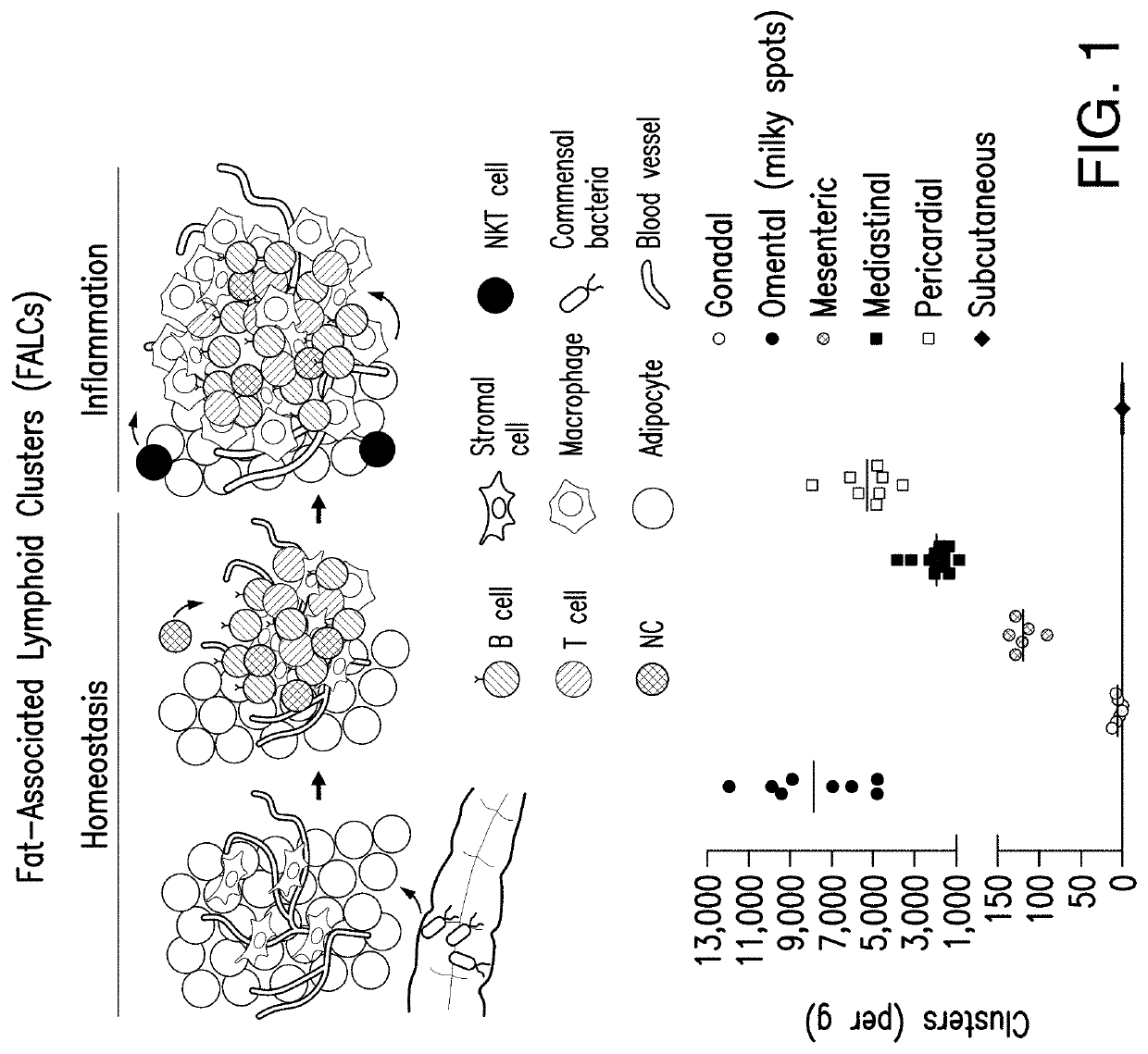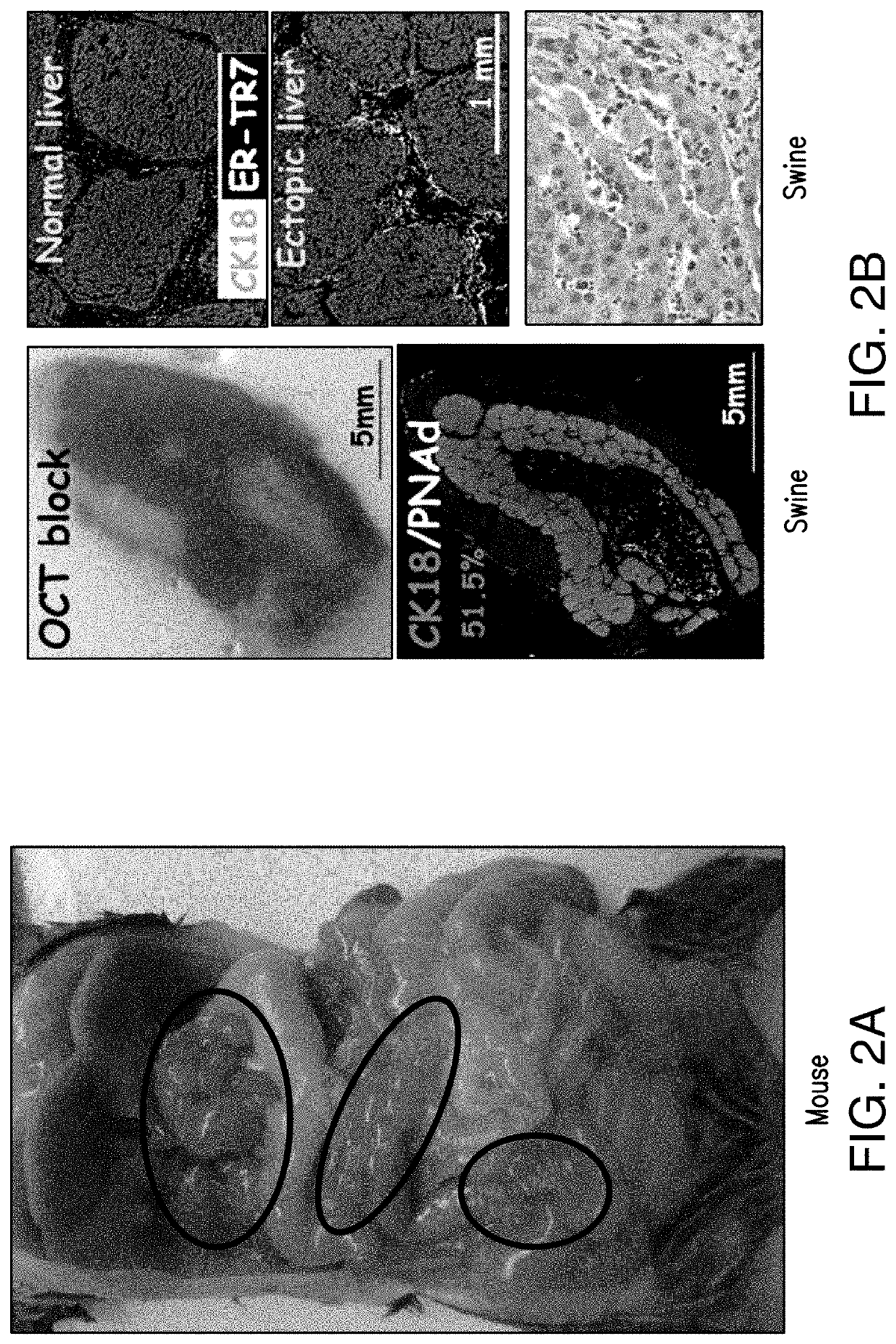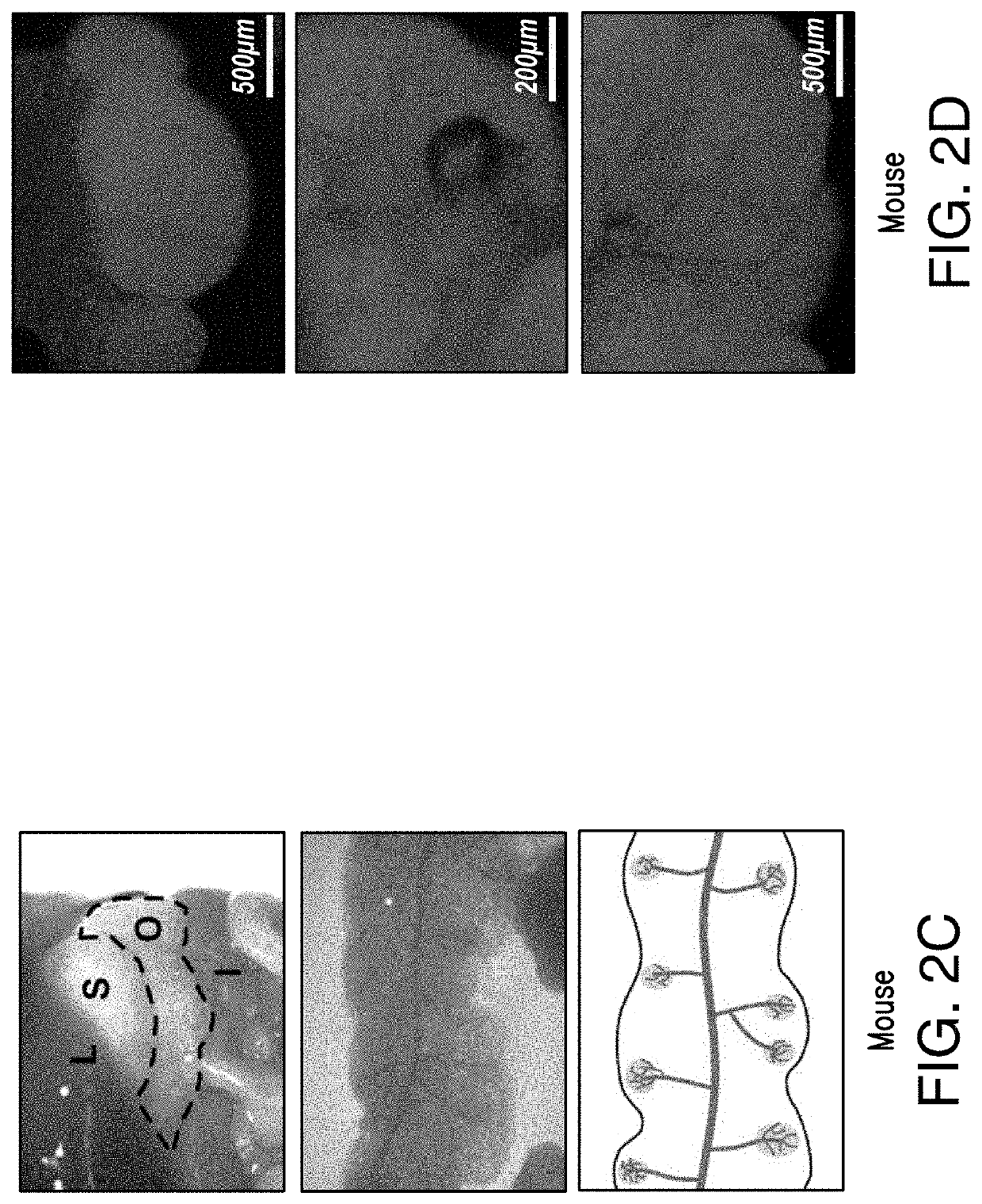Fat-associated lymphoid clusters as sites for transplantation, tissue regeneration, organogenesis and function for multiple tissues
a lymphoid cluster and fat-associated technology, applied in the digestive system, unknown materials, medical preparations, etc., can solve the problems of insufficient donor supply, insufficient liver function, and inability to effectively treat patients with liver disease, so as to promote successful vascularization/angiogenesis and enhance liver function.
- Summary
- Abstract
- Description
- Claims
- Application Information
AI Technical Summary
Benefits of technology
Problems solved by technology
Method used
Image
Examples
example 3
8. Inflammation Enhances Growth of Grafted Heptocytes
[0204]Peritoneal inflammation induces an increase in Fat Associated Lymphoid Clusters (FALCs) number and size (Benezech, C. et al. Inflammation-induced formation of fat-associated lymphoid clusters. Nature immunology 16, 819-828 (2015)). This effect is dependent on TNF expression by myeloid cells and TNFR signaling on stromal cells (Benezech et al. (2015)). To determine if inflammation leads also to increased engraftment of hepatocytes, a sterile peritoneal inflammation driven by Zymosan (a yeast-derived ligand of Toll-like receptor 2) was initiated in wild-type C57b1 / 6 and control animals (wild-type C57b1 / 6 injected with PBS) (See FIG. 23). GFP+ hepatocytes were transplanted 3 days later in both groups of animals and sacrificed after 1 week.
[0205]As shown in FIG. 24, Zymosan-induced inflammation increased dramatically the presence of GFP+ cells, as visualized in tissue and by quantification of GFP+ hepatocytes in omentum and mes...
PUM
 Login to view more
Login to view more Abstract
Description
Claims
Application Information
 Login to view more
Login to view more - R&D Engineer
- R&D Manager
- IP Professional
- Industry Leading Data Capabilities
- Powerful AI technology
- Patent DNA Extraction
Browse by: Latest US Patents, China's latest patents, Technical Efficacy Thesaurus, Application Domain, Technology Topic.
© 2024 PatSnap. All rights reserved.Legal|Privacy policy|Modern Slavery Act Transparency Statement|Sitemap



